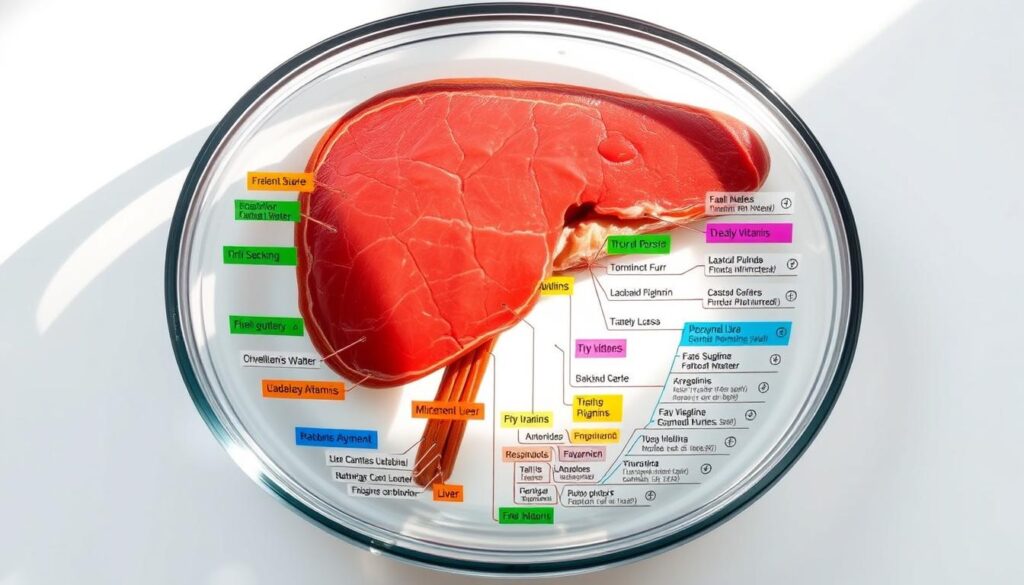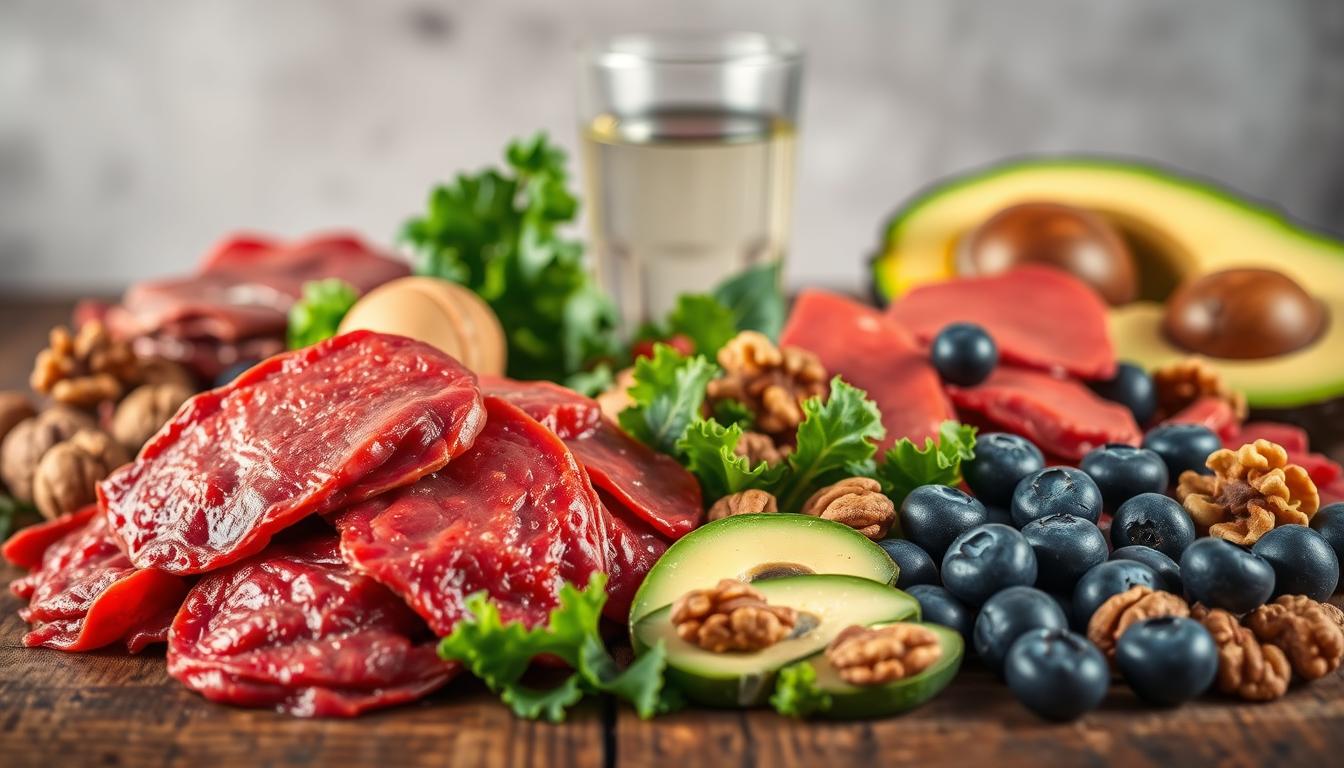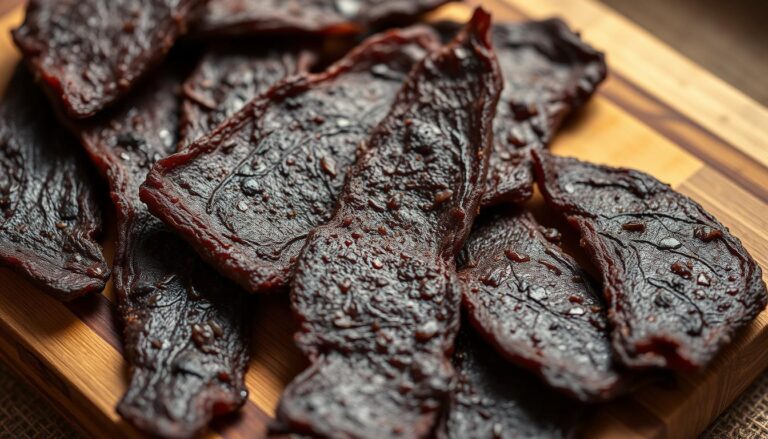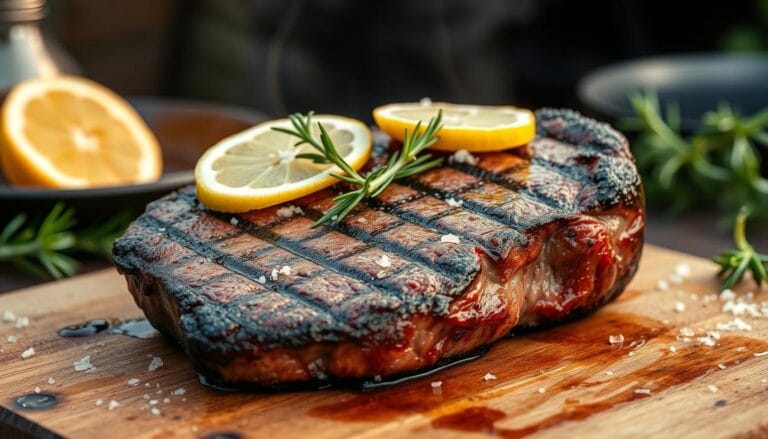Is Liver Good for You? Nutrition Facts Inside
Have you ever hesitated before trying organ meats? Many people cringe at the thought, yet cultures worldwide have prized them for centuries. Packed with essential nutrients, liver stands out as one of nature’s most concentrated superfoods. But does it deserve a spot on your plate?
A 3-ounce serving of beef liver delivers 23g of protein and over 100% of your daily vitamin A. It’s also rich in iron, B vitamins, and copper. Despite its health benefits, modern diets often overlook this powerhouse. Some worry about toxins, but healthy animals filter these efficiently.
Grass-fed or organic options minimize concerns about antibiotics. Whether you love it or loathe it, understanding its role in a balanced diet helps you decide. Let’s explore what makes this food so unique—and who should enjoy it cautiously.
Table of Contents
Is Liver Good for You? Nutrition Facts Inside
Key Takeaways
- Liver offers high protein and essential vitamins in small servings.
- Grass-fed or organic choices reduce antibiotic risks.
- Vitamin A content exceeds daily needs in just one portion.
- Historically valued, but less common in modern meals.
- Balance benefits with caution for certain groups.
What Is Liver and Why Is It Nutrient-Dense?
Few foods pack as many nutrients as liver does. This organ meat acts as a filter in animals, processing toxins and storing vital compounds. Its biological role explains why it’s richer in vitamins than muscle cuts.
A 3.5-ounce serving delivers staggering amounts of vitamin B12 (2,917% DV) and vitamin A (104% DV). It’s also a top source of heme iron, which your body absorbs easily. Compare that to spinach or steak, and liver wins for concentration.
Key Functions and Nutritional Edge
| Nutrient | Liver (3.5 oz) | Beef Steak (3.5 oz) |
|---|---|---|
| Vitamin B12 | 2,917% DV | 51% DV |
| Iron | 36% DV | 15% DV |
| Protein | 23g | 26g |
Modern farming reduces toxin risks. A 2015 Consumer Reports study found grass-fed beef safer than conventional. Cooking methods matter too—sautéing preserves more nutrients than boiling.
With all nine essential amino acids, liver supports muscle growth and keeps you full longer. Its copper content aids energy production, while preformed vitamin A boosts immunity.
Types of Liver and Their Unique Benefits
From beef to cod, each type of liver brings unique flavors and health perks. These organ meats vary in texture, nutrient density, and culinary roles. Whether you crave bold richness or subtle mildness, there’s a variety to match your palate.
Beef Liver: The Most Popular Choice
Packed with 23g protein per 3-ounce serving, beef liver dominates for its robust taste. Grass-fed options offer quadruple the phytonutrients. Southern livermush and classic pâtés showcase its versatility.
Chicken Liver: A Milder Alternative
With 19g protein per 4 ounces, chicken liver wins fans with its creamy texture. It’s lower in vitamin A than beef but equally rich in iron. Jewish chopped liver recipes highlight its smooth, spreadable quality.
Pork, Lamb, and Other Varieties
Pork liver requires soaking to reduce bitterness, while lamb liver shines in Middle Eastern kebabs. Goose liver (foie gras) delivers luxury, and cod liver provides omega-3s. Each suits specific dishes and nutrient needs.
| Type | Key Nutrient | Flavor Profile |
|---|---|---|
| Beef | High iron (36% DV) | Intense, metallic |
| Chicken | B vitamins (85% DV) | Mild, buttery |
| Cod | Omega-3s (1.2g/serving) | Delicate, briny |
Martha Stewart’s cod liver salad recipe proves even adventurous options can delight. Regional traditions—from French pâté to Scottish haggis—celebrate these meats globally.
Is Liver Good for You? The Health Benefits
Athletes and health enthusiasts have relied on its benefits for decades. This nutrient-packed superfood supports everything from energy levels to muscle recovery. A 3-ounce serving of beef liver delivers 50% of your daily iron needs and 17g of protein—making it a powerhouse for vitality.

Rich in Iron and B Vitamins for Energy
Iron and B12 work together to prevent anemia and boost blood health. Just one serving covers 2,917% of your B12 needs—critical for converting food into energy. This synergy explains why 1930s bodybuilders consumed it weekly for endurance.
High-Quality Protein for Muscle Growth
With all nine essential amino acids, protein in liver aids muscle repair and weight management. Its 77% DV of choline also supports brain function. Compare it to chicken breast:
| Nutrient | Beef Liver (3oz) | Chicken Breast (3oz) |
|---|---|---|
| Protein | 17g | 26g |
| Iron | 4mg | 0.7mg |
| B12 | 2,917% DV | 5% DV |
Vitamin A for Vision and Immunity
Preformed vitamin A (104% DV per serving) sharpens night vision and reduces infection risks. UNICEF notes deficiencies affect 33% of preschoolers globally. Folate (65% DV) also makes it ideal for prenatal diets.
From strengthening bones with vitamin K to fueling your body, the health benefits are undeniable. Whether sautéed or blended into patties, it’s a timeless addition to modern meals.
Nutritional Breakdown: What’s in a Serving of Liver?
Understanding the exact nutritional profile helps maximize benefits while avoiding potential risks. A 3oz serving of beef liver delivers 149 calories, 23g protein, and 4g fat—making it a lean, nutrient-dense choice.

Calories, Protein, and Fat Content
Compared to conventional meats, liver offers more nutrients per gram. Chicken breast has 26g protein but lacks the iron and vitamins found in liver. Beef liver’s 4g fat content is lower than ribeye steak (22g).
| Type (3oz) | Calories | Protein (grams) | Fat (grams) |
|---|---|---|---|
| Beef Liver | 149 | 23 | 4 |
| Chicken Liver | 135 | 19 | 5 |
| Pork Chop | 193 | 26 | 10 |
Vitamins and Minerals per Serving
Beef liver exceeds copper RDA by 1,300% and provides 104% DV for vitamin A. Chicken liver has 484mg cholesterol per 4oz—consider for heart health.
- Vitamin A: 3,000mcg RAE is the safe upper limit—one serving covers 104%.
- Iron: Heme iron (36% DV) absorbs better than plant sources.
- Copper: Supports metabolism but can be toxic in excess.
Calf liver has 1g carbs, while chicken liver has 2g. Balance intake to avoid vitamin A toxicity, especially during pregnancy.
Potential Risks and Who Should Avoid Liver
While packed with nutrients, this food isn’t right for everyone. High vitamin A and copper levels pose risks for some, and its cholesterol content demands moderation. Understanding these concerns helps you decide if it fits your diet.
Vitamin A and Copper Toxicity Concerns
A 3oz serving delivers 3,000+ mcg vitamin A—exceeding daily limits. A 1995 study linked excessive intake during pregnancy to birth defects. Those with Wilson’s disease face copper overload, as the organ stores this mineral.
High Cholesterol and Purine Content
With 484mg cholesterol per 4oz serving, overconsumption may impact heart health. Purines break down into uric acid, worsening gout flare-ups. The USDA recommends cooking to 160°F to kill pathogens safely.
Special Considerations for Sensitive Groups
Pregnant women should limit intake due to vitamin A’s teratogenic effects. Gout sufferers may need to avoid it entirely. Medications like orlistat can interact with fat-soluble vitamins in liver.
- NAFLD risks: Overconsumption may strain metabolic health.
- Antibiotic residues: 2023 research found traces in conventional varieties.
- Moderation: Weekly servings balance benefits and risks.
How to Incorporate Liver into Your Diet
Transforming liver into delicious meals requires smart preparation tricks. Its robust flavor can be tamed with simple methods, making it a versatile ingredient. Whether you’re new to organ meats or a seasoned fan, these tips elevate every bite.
Soaking and Cooking Tips to Reduce Bitterness
Soak slices in milk or lemon juice for 1–2 hours before cooking. Casein proteins bind to metallic compounds, softening the taste. Pat dry thoroughly to ensure a crispy sear.
Pair caramelized onions or bacon to balance flavors. Slow cooking in broth or wine reduces toughness. Avoid overcooking—aim for a pink center to retain moisture.
| Method | Effect | Best For |
|---|---|---|
| Milk Soak | Neutralizes bitterness | Beef or lamb liver |
| Lemon Marinade | Brightens flavor | Chicken liver pâté |
| Bacon Wrap | Adds smoky richness | Appetizers |
Creative Recipes: Liver Pâté, Burgers, and More
Blend cooked liver into ground beef (30% ratio) for nutrient-packed meatballs. German recipes like liverwurst spread showcase its creamy texture. Lebanese fried liver with garlic and parsley offers a crispy twist.
For beginners, try these ideas:
- Pâté: Blend chicken liver with butter, thyme, and brandy.
- Burgers: Mix minced liver with mushrooms for juiciness.
- Supplements: Capsules lack whole-food synergy but suit those averse to taste.
Enjoy in moderation—1 serving weekly balances benefits and risks. Always cook to 160°F to ensure safety from pathogens like salmonella.
Conclusion: Should You Eat Liver?
This nutrient-rich food delivers unmatched health benefits when consumed wisely. Packed with iron and B vitamins, it combats fatigue and supports blood function better than many supplements.
Enjoy it in moderation—once or twice weekly. Pair with citrus or bell peppers to boost iron absorption. Opt for grass-fed or organic sources to minimize potential toxins.
While ancestral diets prized its benefits, modern diet plans should weigh individual needs. Consult a nutritionist if you have specific health concerns. When prepared well, it’s a powerhouse worth exploring.
Balance remains key. This superfood offers remarkable value but carries risks if overconsumed. Smart choices let you harness its potential safely.
FAQ
What makes liver so nutrient-dense?
Which type of liver offers the most benefits?
Can eating liver boost energy levels?
How much liver is safe to eat weekly?
Does liver raise cholesterol concerns?
What’s the best way to prepare liver?
Who should avoid eating liver regularly?
For more cooking tips, stay connected with us. We also recommend the cookbook Skinnytaste Simple: Easy, Healthy Recipes with 7 Ingredients or Fewer
For more Recipes about Beef?
Did You try our recipe ?
There are no reviews yet. Be the first one to write one.





